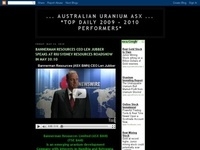Published on Friday March 25 2011

This gives one a pretty good under standing of the
Life Cycle of a Nuclear Fuel Rod
A typical solid nuclear fuel rod includes a zirconium alloy tube or “cladding” encasing a single column of uranium fuel pellets. The cladding tube is smaller in diameter than your index finger, and is about 12 feet long.
 The uranium pellets are each about the size of the tip or your pinky finger, with the energy equivalent of 17000 cubic feet of natural gas, 1780 pounds of coal or 3.5 barrels of oil.
The uranium pellets are each about the size of the tip or your pinky finger, with the energy equivalent of 17000 cubic feet of natural gas, 1780 pounds of coal or 3.5 barrels of oil.
The cladding, pellets and even an individual virgin rod are not hazardous to handle alone, however, multiple loaded rods in close proximity will begin a spontaneous fission reaction. The rods are thus maintained in a non-critical, i.e., a non-fissioning, state during storage or transport by either substantial separation between rods or by control rods or other moderators suitable to absorb neutrons in a more compact rod arrangement.
The fuel rods are then arranged in “bundles” or “fuel rod assemblies”, e.g., 14×14 or 17×17 arrays, which are then inserted into the core with a number of control rods being retractable from the bundle to initiate fission and insertable into the bundle to stop fission. Many rod bundles are oriented vertically in the reactor core with a substantial flow of water passing upward through the bundles to convey the fission reaction heat to a steam turbine for generation of electricity.
The thin-walled cladding is transparent to radiation but is naturally affected by the high heat stresses and heat loading in the core. The rods are preemptively retired after a finite core cycle, 18 months to several years, to maintain cladding integrity even though only a small fraction of the uranium is “spent.” This finite core cycle is also limited by accumulation of fission byproducts, particularly nuetron absorbers, inside the fuel rod.
A retired or spent nuclear fuel (“SNF”) rod is placed in a water cooling tank for an initial cool-down period during which the more highly radioactive (shorter half-life) isotopes rapidly decay. During this period, the rapid decay still generates substantial decay radiation and heat, albeit only a small fraction of the fission radiation and heat that is generated during reactor operation. After this initial cool-down period, the slower decay of the remaining longer-half-life isotopes generates a moderate amount of decay radiation and heat, which is readily absorbed by a concrete “dry cask” during long-term storage.
A typical nuclear plant can have hundreds of active fuel rod bundles in each core, thousands of SNF rods in short-term cool-down tanks and fuel from tens of thousands of SNF rods in long-term dry cask storage. The cooling tanks at the compromised Fukushima Daiichi nuclear plant collectively house around 11,000 SNF rods with a portion of those housed in the cooling tanks above reactors 1-4.
Water in the cool-down tanks acts as a neutron moderator, radiation shield and coolant, so long as the water level around the rods in the tank is maintained. If the SNF rods are left exposed and uncooled long enough, rapid oxidation (often called “burning”) and extreme heat stress can eventually compromise the cladding, expose the uranium, generate hydrogen, and release fission byproducts. Unmoderated and uncooled SNF rods can produce sufficient radiation and heat that even brief close proximity worker exposure is unacceptable. Should the cooling tank levels drop too low for too long, it could be challenging to restore the cooling tank water levels from a safe distance.
Hopefully, the cooling tank water levels at the Fukushima Daiichi nuclear plant will be restored and the situation stabilized soon.
 Australian Uranium News - Research
Australian Uranium News - Research


For Readers wondering of the Blue glow the water.. it's called cerenkov radiation with the electromagnetic particles traveling faster than light in the water medium only .
ReplyDelete